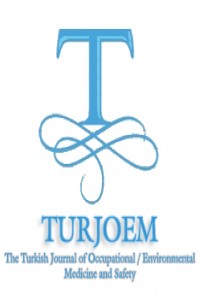MOLACULARLY IMPRINTED MAGNETIC CHITOSAN BEADS FOR SELECTIVE REMOVAL OF TEXTILE DYES FROM WASTE WATER
Abstract
Organic dyes
represent effective chemical hazard encountered in our environment as organic
pollutants, so the dye effluent releasing in various industries is one of the
most serious water pollution source. Many dyes which are one of the
environmental contaminants are difficult to degrade due to their complex
structures and toxic degradation pruduct. Among various branch of dyes more
attention must be droned to synthetic dyes, specifically those belonging to the
xanthene class with extensive application. A variety of studies were devoted to
the assessment of the acute toxicity of this dyes.
Molecularly
imprinted polymers (MIP) represent a new class of materials possessing high
selectivity and good affinity for target molecule. In comparison with the
common adsorbents, the MIP improves the reusability, selectivity and adsorption
capacity of adsorbents.
In this study,
Erythrosine dye selected as a model xanthene dye. Erythrosine-imprinted
magnetic chitosan particules (EIMC) was successfully synthesized for the
removal of ER from aqueous solutions. Non-imprinted magnetic chitosan
particules (NIMC) was also prepared for the comparison. According to TG
analysis result, the Fe3O4 coating process turned the polymerical matrices more
resistant to degradation when compared to the former polymer. Selectivity of
EIMC and NIMC for ER over other dyes (Reactive Yellow, Kim Orange and Reactive
Blue) was evaluated. Adsorption capacity of EIMC and NIMC for Erythrosine,
Reactive Yellow, Kim Orange, Reactive Blue was found 46.05; 20.39, 13.76;
14.06, 18.48; 18.76 and 8.49; 13.90 mg/g, respectively. So, EIMC could use for
selectively removal of ER from waste water.
Keywords
MOLACULARLY IMPRINTED MAGNETIC CHITOSAN BEADS FOR SELECTIVE REMOVAL OF TEXTILE DYES FROM WASTE WATER
References
- Ahmet ESER, Tülin AYDEMIR, Seda ÇINAR, Ayşe DINÇER
- Celal Bayar University, Faculty of Science and Arts, Chemistry Department 45140 TURKEY
Abstract
References
- Ahmet ESER, Tülin AYDEMIR, Seda ÇINAR, Ayşe DINÇER
- Celal Bayar University, Faculty of Science and Arts, Chemistry Department 45140 TURKEY
Details
| Journal Section | Articles |
|---|---|
| Authors | |
| Publication Date | February 16, 2017 |
| Published in Issue | Year 2017 Volume: Volume 2 Issue: İssue 1 (1) - 2.İnternational Congress Of Forensic Toxicology |


